A Guide to Japanese Table Manners: Etiquette Tips
Terrell Wallin
Posted on September 16, 2021
Share:

Whenever you visit a new place, having a basic grasp of the local table manners can be very reassuring, and Japan is no exception. Japanese table manners are essential in Japan, not just for your image or impression of others but for the comfort of those around you.
Start of the meal
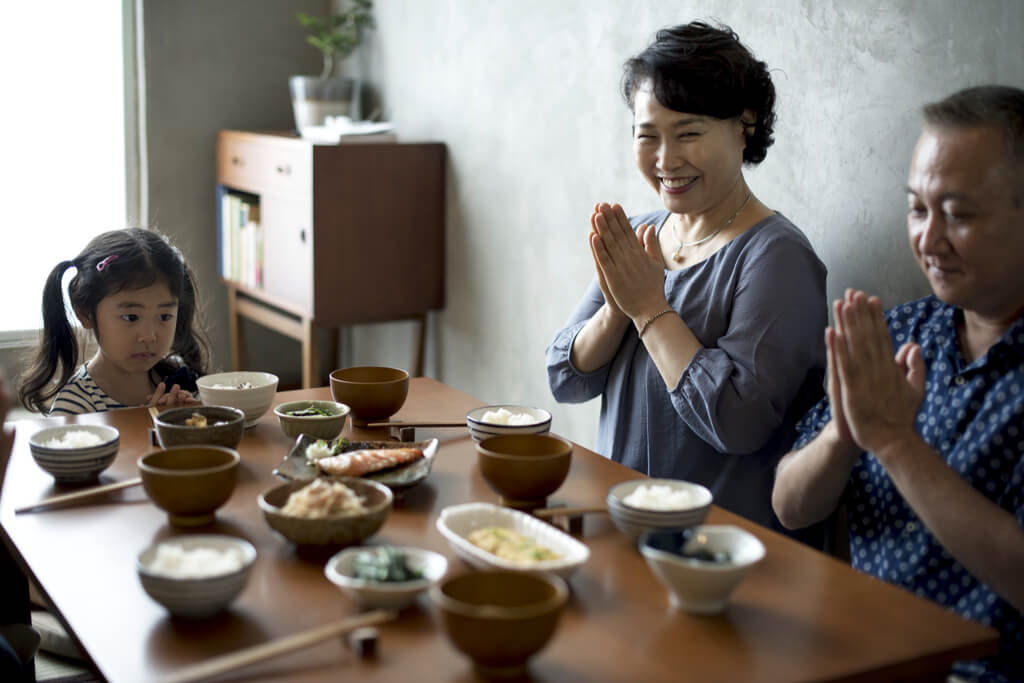
You will receive a small hand towel, or ‘oshibori’ in Japanese, when dining out. Contrary to popular opinion, this is not for your face or neck. It is for you to wipe your hands. According to dining etiquette, it is essential to be clean at the table, and the oshibori is the final step to ensure complete cleanliness.
It is considered good manners to start eating together. However, if you are served first, and the food is better devoured, like hot soba (buckwheat noodles), you can say ‘osaki ni,’ which means ‘excuse me, I’ll start first.’ If the same is true for one of your dining partners, you can tell them to ‘go ahead’ by saying ‘osaki ni douzo.'”
Want to practice your Japanese table manners? Practice with traditional Japanese sweets and teas sent right to your door by Sakuraco!

Chops away
When eating, try to pay attention to chopsticks etiquette. It’s an essential part of Japanese table manners. Of course, no one expects you to be perfect, but following the tips below and knowing how to use chopsticks might impress your hosts.
When not using the chopsticks, rest them on top of your bowl or small plate, or neatly return them to the chopsticks rest, or ‘hashi-oki,’ a standard part of any Japanese table setting. If not, you may have people ducking for cover.
Another no-no at the Japanese table is pointing your chopsticks straight up in the rice bowl. This is reminiscent of the incense pointing straight up at Buddhist funerals and may cause shock among your fellow diners.
It is considered bad manners to pass food using chopsticks themselves. At the Japanese dining table, this can remind diners of the passing of ashes at a funeral, so avoid it if you can. Instead, pass the plate or bowl itself.
Use the opposite end of your chopsticks if there is food to share at the table and no dedicated serving utensils. Likewise, if you have food that requires a dipping bowl amongst diners, such as kushi-katsu (deep-fried meat and vegetable skewers): don’t double dip! This is mainly a hygiene thing, and especially today, it’s a good idea to heed this one.
Recently, more restaurants have been providing disposable chopsticks for diners. Contrary to popular belief, when separating the wooden chopsticks, it is a bad idea to rub them together before using them – you may get splinters or insult the restaurant.
One of our tips to avoid embarrassment at the Japanese table is to hold the bowl under your mouth near the table when eating rice. This way, you can catch any falling rice in the bowl.
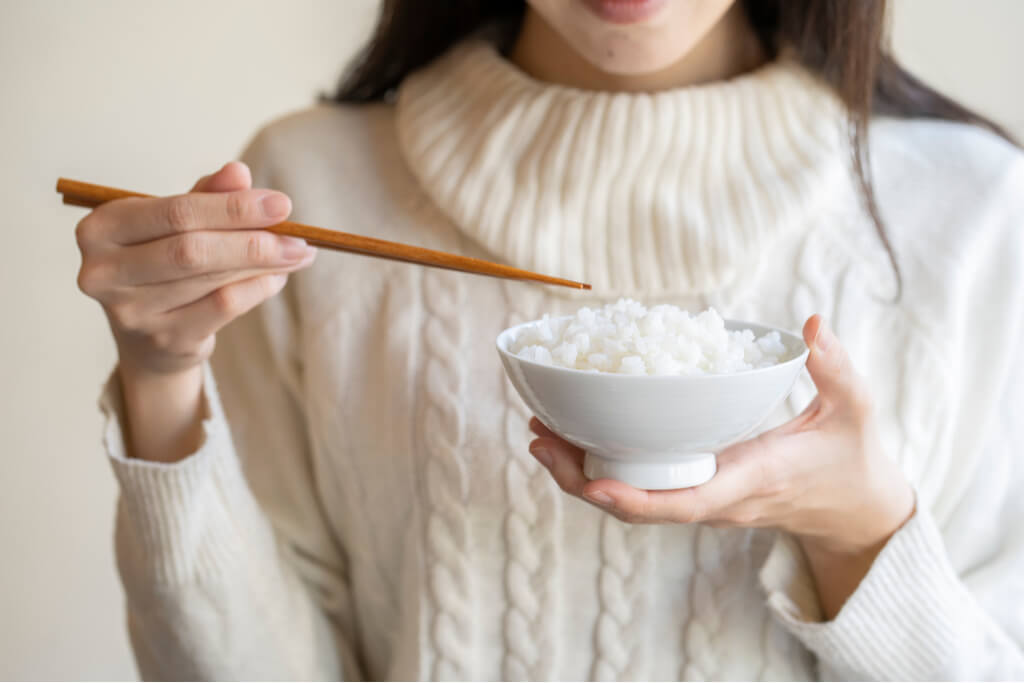
Soups and Bowls
The concept of Japanese food is all about balance. In fact, at the core of Japanese cuisine is the idea of ‘ichiju-sansai‘ which means ‘one soup, three dishes.’ This is part of why miso soup is given in many restaurants.
Alongside miso soup comes proper etiquette. As a part of Japanese table manners, hold the soup bowl in one hand and drink the liquid straight from the bowl, picking out the solids, such as tofu or wakame (Japanese kelp), with your chopsticks as you go.
Etiquette in Japan dictates that when you have a small bowl containing liquid, you should drink directly from it. If it is a bigger/heavier bowl, such as a ramen (wheat noodles) bowl, there will more often than not be a ceramic spoon, or ‘renge‘, included so you can use this instead.
Noises
When eating ramen, soba, or udon (thick wheat flour noodles), it is proper etiquette to slurp your noodles as you eat, no matter where you stand in the ramen vs. soba vs. udon debate. The sound indicates enjoyment, and there is a scientific reason behind it too. Slurping the noodles means sucking air into your mouth, which enhances the taste. It’s similar to swirling wine around your glass to release its aroma!
You may have heard people saying ‘umai‘ (tasty) loudly when taking the first bite. This is to indicate to the chef that you appreciate their cooking. You can also say ‘oishii‘ (delicious), which is slightly more polite, or ‘oishii-desu‘ (It’s delicious) for a formal setting.
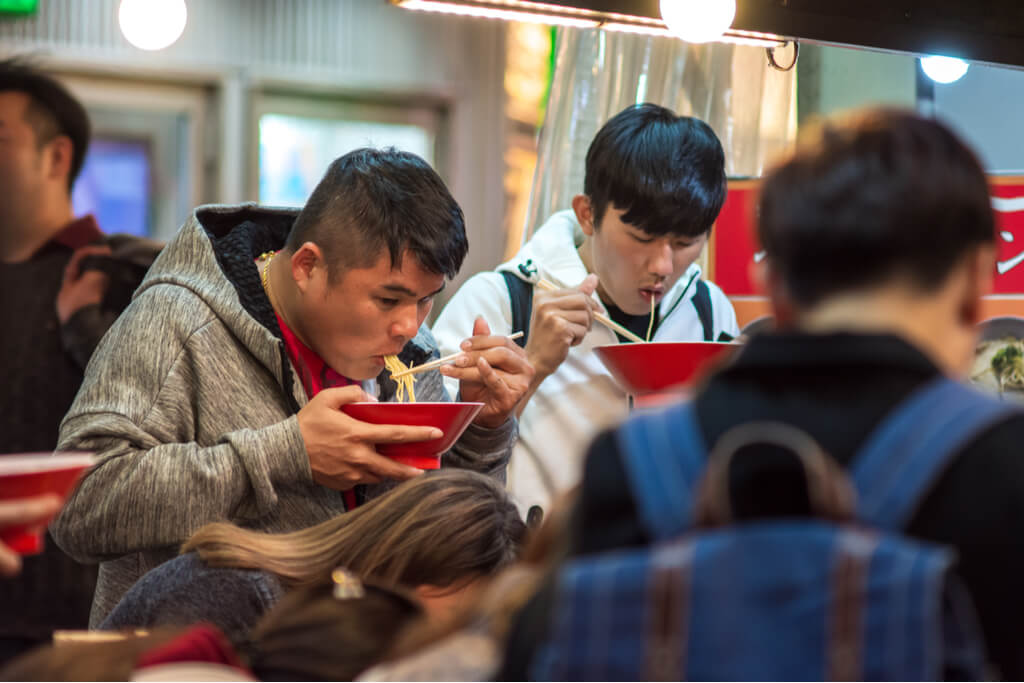
Japanese Table Manners at Home
In Japanese culture, showing respect for others is highly valued, even at mealtimes. Following specific table manners is essential when dining in a Japanese home. Saying “Itadakimasu” before eating shows gratitude and appreciation for the food. Using chopsticks correctly is crucial, and it’s impolite to point with them or pass food to others. Wasting food is unacceptable, so only eat what you can and finish your plate.
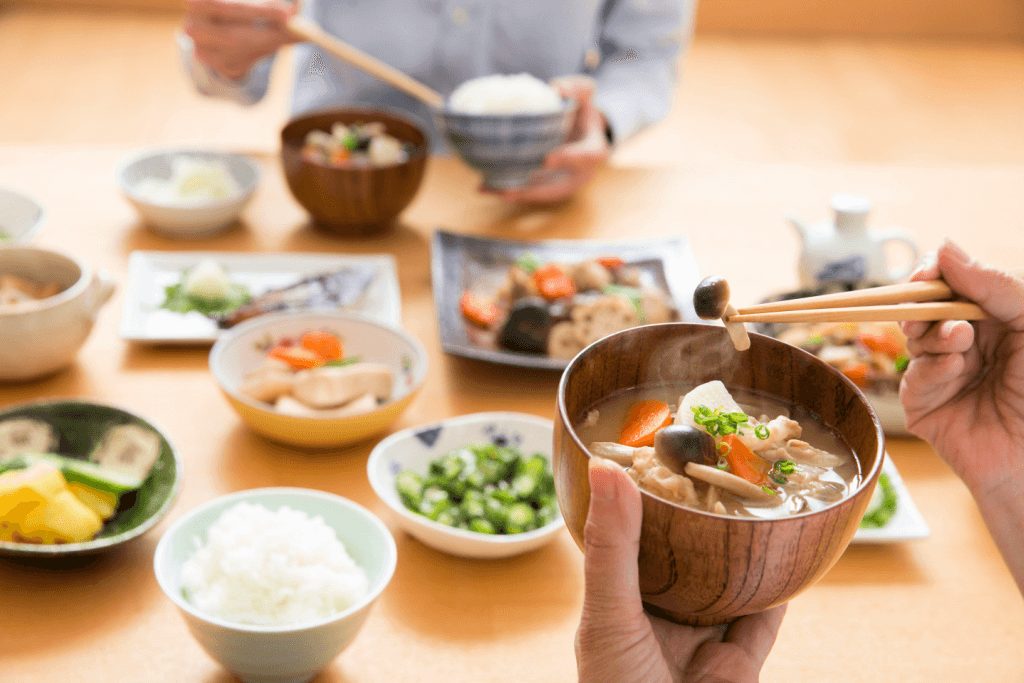
When drinking alcohol or tea, pour for others before yourself and hold your cup with both hands when someone pours for you. Blowing your nose at the table is considered impolite, so excuse yourself to the restroom if necessary. Finally, thank the host after the meal, and show gratitude for their hospitality. By following these table manners, you can demonstrate respect for Japanese culture and make a positive impression on your hosts.
Finished!
When you’ve finished your meal, put your chopsticks back in their original position, uncrossed, maybe on the hashi-oki or the table. This shows the server or your host that you have finished eating.
Just like the opening phrase at the start of the meal, ‘gochisousama‘ is the phrase for the end of the meal. While the opening phrase expresses gratitude towards the food, the closing remark means ‘thank you for cooking’ and expresses gratitude towards the chef and servers.
Of course, different types of food have different etiquette rules; eating sushi is different from having yakiniku (Japanese-style barbecue), and so on, but the basics are the same. We hope you’ve learned a lot from this article.
Let us know in the comments below if you’ve noticed any other rules or if anything surprised you!

Discover authentic flavors with Sakuraco
Get Sakuraco 
1 Responses

Discover authentic flavors with Sakuraco
Get Sakuraco 
Related Articles

Japan Holidays Guide: Relax, Explore, and Delight in Festive Fun
As the year draws to a close, everywhere buzzes with preparations for the holidays, and Japan is no exception. Despite the cold winter weather, you can feel warmth in the scenery, decorations, and festive activities across the country. Let’s explore the unique experiences of holidays in Japan that many people dream of enjoying at least once in their lifetime!

Tokyo Gardens: Five Beautiful Traditional Japanese Gardens to Visit
Tokyo gardens offer a relaxing escape for visitors looking to get a breath of fresh air. However, Tokyo has more than just the typical gardens we see in the West. Let’s explore five traditional Japanese gardens and what makes them unique!

Japan Cruise Spotlight: The Ultimate Guide to Abashiri Icebreaker!
Japan offers a diverse range of cruise experiences, taking in various stunning landscapes. But, in the chilly grip of winter, some voyages pull in adventurers from around the globe. At the forefront of these wintry trips is the Abashiri Icebreaker Cruise in Hokkaido.
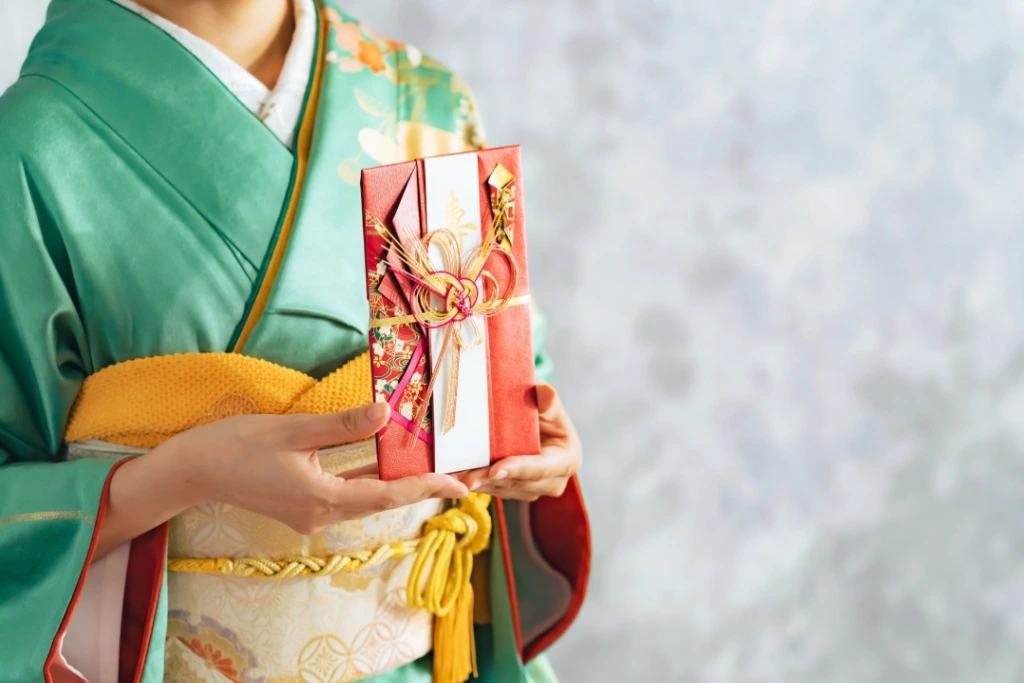
Money Envelopes in Japan: Exploring the World of Shugi Bukuro
Attending a Japanese wedding or celebratory event for the first time can be daunting, especially when it comes to gift-giving. Although it may seem complicated, we’ll break it down so that you have nothing to worry about.



Thank you for the articles. I learned as a child how to use chopsticks but I didn’t know they were called hashi. I also didn’t know japanese etiquette. I hope the next time I go to my favorite Japanese restaurant, I remember so that the chef knows how much I appreciate their food!